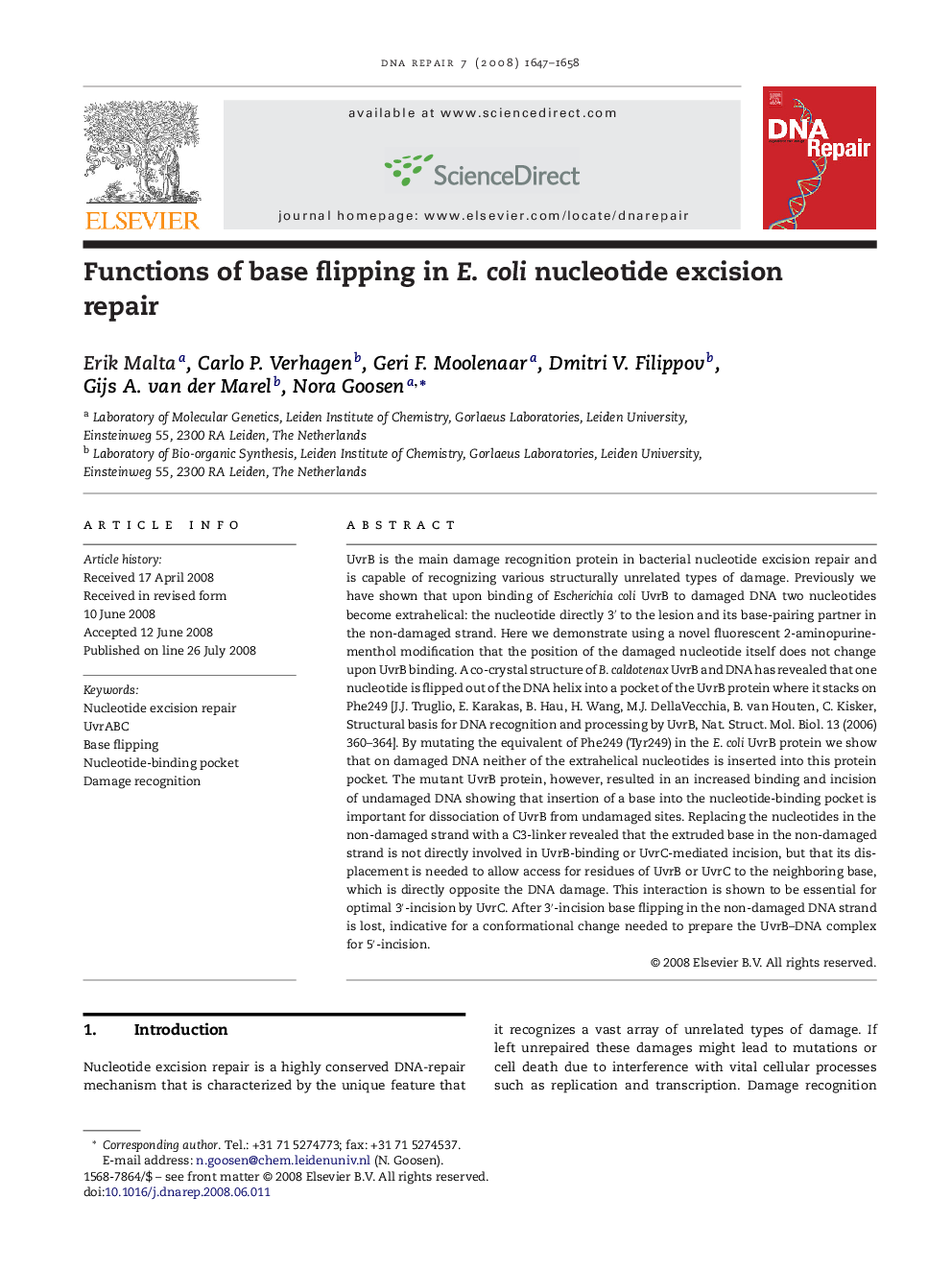| کد مقاله | کد نشریه | سال انتشار | مقاله انگلیسی | نسخه تمام متن |
|---|---|---|---|---|
| 1980620 | 1061869 | 2008 | 12 صفحه PDF | دانلود رایگان |

UvrB is the main damage recognition protein in bacterial nucleotide excision repair and is capable of recognizing various structurally unrelated types of damage. Previously we have shown that upon binding of Escherichia coli UvrB to damaged DNA two nucleotides become extrahelical: the nucleotide directly 3′ to the lesion and its base-pairing partner in the non-damaged strand. Here we demonstrate using a novel fluorescent 2-aminopurine-menthol modification that the position of the damaged nucleotide itself does not change upon UvrB binding. A co-crystal structure of B. caldotenax UvrB and DNA has revealed that one nucleotide is flipped out of the DNA helix into a pocket of the UvrB protein where it stacks on Phe249 [J.J. Truglio, E. Karakas, B. Hau, H. Wang, M.J. DellaVecchia, B. van Houten, C. Kisker, Structural basis for DNA recognition and processing by UvrB, Nat. Struct. Mol. Biol. 13 (2006) 360–364]. By mutating the equivalent of Phe249 (Tyr249) in the E. coli UvrB protein we show that on damaged DNA neither of the extrahelical nucleotides is inserted into this protein pocket. The mutant UvrB protein, however, resulted in an increased binding and incision of undamaged DNA showing that insertion of a base into the nucleotide-binding pocket is important for dissociation of UvrB from undamaged sites. Replacing the nucleotides in the non-damaged strand with a C3-linker revealed that the extruded base in the non-damaged strand is not directly involved in UvrB-binding or UvrC-mediated incision, but that its displacement is needed to allow access for residues of UvrB or UvrC to the neighboring base, which is directly opposite the DNA damage. This interaction is shown to be essential for optimal 3′-incision by UvrC. After 3′-incision base flipping in the non-damaged DNA strand is lost, indicative for a conformational change needed to prepare the UvrB–DNA complex for 5′-incision.
Journal: DNA Repair - Volume 7, Issue 10, 1 October 2008, Pages 1647–1658